CSAE 2018 The 2nd International Conference on Computer Science and Application Engineering
Keynote Speakers
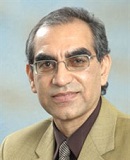
Ali Emrouznejad
Professor and Conference Chair of CSAE2018
Aston University, United Kingdom
Title:Big Data & Smart Cities Evaluation
Abstract:Big Data is a major source of change in today’s world. It is without doubt a source of immense economic and social value with the potential to impact individuals, organizations, and society alike in ways that are yet to be fully explored.
A Smart City provides effective integration of physical, digital and human systems in the built environment to deliver a sustainable, prosperous and inclusive future for its citizens.
In this talk we introduce big data and smart cities and explain how big data analytics could benefit of mathematical modelling to improve the performance of smart cities.

Wing-Sum Cheung
Professor
Department of Mathematics, University of Hong Kong, China
Title: Application of Integral Inequalities to Variational Problems
Abstract:The classical method of solving variational problems resorts to handling the associated Euler-Lagrange Equations, which are in general a system of higher order nonlinear differential equations and are very difficult, if not impossible, to tackle. For certain types of variational problems, suitably devised integral inequalities could easily lead to optimal solutions effectively without having to consider the Euler-Lagrange Equations. A few examples of this approach will be given.
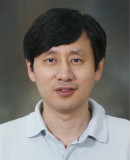
Hesheng Wang
Professor
Department of Automation, Shanghai Jiao Tong University, China
Title: Visual servoing of Robots
Abstract: Visual servoing is an important technique that uses visual information for the feedback control of robots. To implement a visual servo controller, an important step is to calibrate the intrinsic and extrinsic parameters of the camera. It is well known that the camera calibration is costly and tedious. The calibration accuracy of these parameters significantly affects the control errors. It is desirable to use uncalibrated visual signals directly in controller design. By directly incorporating visual feedback in the dynamic control loop, it is possible to enhance the system stability and the control performance. Dynamic visual servoing is to design the joint inputs of robot manipulators directly using visual feedback. In the design, the nonlinear dynamics of the robot manipulator is taken into account. In this talk, various visual servoing approaches will be presented to work in uncalibrated environments. These methods are also implemented in many robot systems such as manipulator, mobile robot, soft robot, quadrotor and so on.

Jianhua Yang
Professor
The Department of Electrical and Computer Engineering, University of Massachusetts, Amherst
Title: Unconventional computing with memristive devices and arrays
Abstract: Memristive devices1 have become a promising candidate for unconventional computing. In this talk, I will present some of our recent work on unconventional computing experimentally implemented by using memristive devices or crossbar arrays.
Using traditional non-volatile memristors with 64 stable analog resistance levels, we have built a dot-product engine based on a 128 x 64 1T1R crossbar array. Accurate image compression and filtering have been demonstrated with such analog computing accelerator. In addition, we have demonstrated efficient and self-adaptive in-situ learning in a two-layer neural networks using such memristive arrays, which is expected to significantly improve the speed and energy efficiency of deep neural networks.
Using our newly developed diffusive memristors with diffusion dynamics that is critical for neuromorphic functions, we have developed artificial synapses6 and neurons to more faithfully emulate their bio-counterparts and more efficiently perform spiking neural network functions. We have further integrated these artificial synapses and neurons into a small neural network, with which pattern classification and unsupervised learning have been demonstrated. Moreover, the diffusive memristors can be used as true random number generators for cybersecurity applications and artificial nociceptors for robotics applications.

Jimmy Liu
Executive Director and Professor
Ningbo Institute of Industrial Technology, Chinese Academic of Sciences
Title: Artificial Intelligence and Ocular Medical Image Processing
Abstract: In the talk, Jimmy will update the ocular imaging research work in the past years. He will share his AI-based image processing work on various ocular imaging modalities on the following 4 areas: ocular disease screening, robot assisted eye micro-surgery, ocular biometrics, as well as ocular medical informatics using genome study. He will introduce the current issues, technologies and approaches in this inter-disciplinary research area.

Sergey V. BEZZATEEV
Full Professor
Head of the Cyber-physical Systems Security Department, ITMO University, St. Petersburg, Russia.
Title: Multi-Factor Authentication for Securing Advanced IoT Applications
Abstract: In this presentation, we study the advanced Internet of things (A-IoT) architecture (focusing on vehicle-to-everything (V2X) scenario) and its user Multi-factor Authentication (MFA) requirements. We show that conventional methods of combining the authentication factors does not bring the benefits in the A-IoT ecosystem and thus novel concept of intellectual authentication is required to operate in such high dynamic and heterogeneous environment. We also outline potential solutions to address challenging issues of continuous authentication paradigm, with the hope that this presentation will provide the basis for future research in this emerging area. The communicating devices in the A-IoT are highly dynamic and heterogeneous ranging from wearable electronics carried by pedestrians to highly mobile drones. Most of the nodes are equipped with a variety of sensors representing various levels of perception, complexity and cost. Their future collaboration would allow more straight forward and user-friendly interaction between both IoT nodes and humans. We explain our proposal for utilizing Multi-Factor Authentication (MFA) for such novel pre- and continuous (post-) authentication. As a proof of concept, we show some numerical results.

Xiwei Yao
Professor
Xiamen University, China
Title: Quantum Computing and Image Processing:Theory and Experiment
Abstract:Humans obtain most of the information through their eyes. Visual information like images and videos constitutes the largest part of data traffic in the internet. The ever-increasing amount of image data has become enormous, the processing and analysis of which require extraordinary amounts of computational power. In this talk, I would like to introduce the laws of quantum mechanics allow one to reduce the required resources for some tasks by many orders of magnitude if the image data are encoded in the quantum state of a suitable physical system. We demonstrate quantum algorithms for image processing that provide exponential speed-up over their classical counterparts. For the commonly used task of detecting the edge of an image, we propose and implement a quantum algorithm that completes the task with only one single-qubit operation, independent of the size of the image. Considering the widespread importance of visual information processing and its tremendous consumption of computational resources, the potential of highly efficient quantum speed-up for image processing would be an extremely attractive solution to the challenges of big data era.

Michael D Fischer
Professor
Professor, University of Kent at Canterbury, UK
Vice-President, Human Relations Area Files, Yale University
Title: Socially Emergent Ethics for Autonomous Devices (SEEDS)
Abstract:This talk relates scientific, formal and practical support for understanding and enabling adaptive emergence of ethical, social, and collaborative behaviours by artificial agents. Robots, software agents (SA) and environmentally embedded devices (Internet of Things or IoT) will increasingly engage as autonomous agents with other agents, including people across classes and cultures, directly and indirectly. Advances in robotics, software agents and IoT agents, combined with improvements in artificial intelligence (AI), will precipitate new opportunities. New problems and prospects for disaster will also arise, which, if we are to believe the late Stephen Hawking and others, could threaten humanity itself. Positive outcomes depend on our ability to imbue autonomous technology with appropriate ethical responses, at all levels. Rather than a corollary to Asimov’s Three(ish) Laws of Robotics, to be inscribed into every device, we require a set of process principles distributed across agents in joint processes within the affordances and constraints of embedding process contexts. Although ethics are commonly associated in human societies with rules, and even laws, in specific situations ethical plans, responses and behaviours emerge from the requirements of the situation, which support cooperating adaptively and distributing cooperative benefits to all interacting agents.
A 'whole system' perspective promoted by Alfred Whitehead, usually referred to as process philosophy, focuses on processes and dynamic change as a means to unify agents at all levels, from quantum to intergalactic scales. As our aims are rather more modest, operationally I will focus on how capabilities of unique agents interact to foment the emergence of new transient and persistent composite agents, referencing process algebra and a process-based semantics and pragmatics to describe how a limited range of ethical principles can condition positive outcomes to concretely and adaptively emerge in planned and unplanned technical contexts.

Xuanhua Li
Professor
Center for Nano Energy Materials, Northwestern Polytechnical University, Xi'an, China
Title: Plasmon-enhanced graphene sensor
Abstract: The nanoparticle-film gap (NGF) system has been extensively studied due to its strong local enhancement field. However, there are still some technical limitations in establishing effective and simple ways for reliable and precise control of sub-nanospacer. Here two routes are proposed to solve these issues.
In the first part, a novel NGF system is proposed by introducing ultrathin monolayer graphene as well-defined sub-nanospacer between Ag NPs and Ag film (named G(graphene)- NGF system). The new G–NGF system offers tremendous near-field enhancement with one of the highest enhancement ratio of 1700 reported to date, which is mainly due to multiple couplings including the NP–NP couplings and NP-film couplings.
In the second part, a simple, low-cost, all-copper sandwich system has been obtained through directly depositing Cu NPs onto a graphene sheet, which has already been grown on a Cu foil (Cu- NGF). The new design inherits two key advantages: (1) the materials of the NGF coupling system are composed of only cheaper Cu instead of Au and Ag, (2) direct fabrication of the system without transferring graphene will greatly lower the fabrication cost. More importantly, the Cu-NGF system shows a high sensitivity in sensor with the highest enhancement factor (EF, over 1.89 × 107) reported to date in Cu plasmonic systems, opening up a new route for Cu materials in sensor applications.
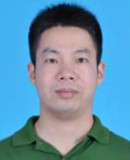
Feng Shao
Professor
School of Information, Science and Engineering, Ningbo University, China
Title: Data mining for 3D image quality assessment
Abstract: Evaluation for 3D quality of experience (QoE) is useful in many applications, and also crucial in all 3D-related signal processing algorithms and systems. Traditional 2D quality criterion (e.g., MSE, PSNR, and SSIM) will be not beneficial to the 3D perceptual quality. Therefore, in this talk, we will first introduce the perceptual problems in 3D vision, and explore some 3D perceptual visual quality metrics. Then, the new trends in data mining, are to be highlighted and explored in full-reference (FR) and no-reference (NR) 3D-IQA metrics.

Xiaohua Feng
Senior Lecturer
School of Computer Science and Technology, University of Bedfordshire
Title: Security Audit in Mobile Apps Security Design
Abstract: Security design of mobile apps is very important, and it is also important that researchers consider and disseminate the continually changing requirements. For mobile application i.e. a software program that runs on a mobile phone, its design, development and management need to consider security impact. In particular, because of mobile app is running on online devices, cyber security defence is required. In this chapter, mobile app security is discussed from the initial planning and design stage to its maintenance after its launch. The impact could benefit site engineers, ICT students and academic researchers.

Ata Kaban
senior lecturer
School of Computer Science,University of Birmingham,United Kingdom
Title: From Random Projections to Learning Theory to Algorithms and Back
Abstract: We consider two problems in statistical machine learning –an old and a new:
(1) Given a machine learning task, what kinds of data distributions make it easier or harder? For instance, it is known that large margin makes classification tasks easier.
(2) Given a high dimensional learning task, when can we solve it from a few random projections of the data with good-enough approximation? This is the compressed learning problem. This talk will present results and work in progress that highlight parallels between these two problems. The implication is that random projection - a simple and effective dimensionality reduction method with origins in theoretical computer science and metric embeddings - is not only a door opener for efficient learning from large high dimensional data sets, but it can also help us make a previously elusive fundamental problem more approachable – which leads to new algorithms for machine learning. On the flip side, this parallel allows us to broaden the guarantees that hold for compressed learning beyond of those implied by compressed sensing.
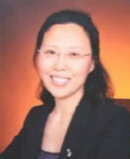
Shaoping Wang
Full Professor
Vice dean School of Automation Science and Electrical Engineering, Beihang University, China
Title: Reliability assessment of aircraft cyber-physical system
Abstract: High reliability and safety requirements of advanced civil aircraft needs the key sub-systems to make full use of their effectiveness. In order to realize the flight qualities, flight control system adopts cyber-physical system with dissimilar redundant power supply system, flight control computer and actuation system. This paper presents a new power flow-based reliability model in component level, in which the power required of dynamic performance is considered. Generalized Stochastic Petri Nets (GSPNs) and the universal generating functions (UGFs) are utilized to model the dynamic process of multi-elements degradation under uncertainty in system level. Application of aircraft aileron indicates that the proposed reliability assessment can reflect the performance degradation with the power change during the flight profile and give the more realistic reliability evaluation.
Keywords: Power flow-based reliability model; Generalized Stochastic Petri Nets (GSPN); Universal Generating Function (UGF); Cyber-physical System; Reliability assessment

King Ngi Ngan
Professor
University of Electronic Science and Technology of China, China
Title: Image Segmentation Visual Quality Assessment
Abstract: Object segmentation is a key technique to extract objects in an image to aid the analysis and processing of its content. Therefore, it is necessary to develop good object segmentation algorithms for generating accurate segmentation results. Object segmentation is often a pre-processing step for different applications which have different quality requirements. Current commonly used statistics-based object segmentation quality assessment methods are not able to satisfy all applications. Therefore, specific quality assessment methods should be designed for the intended application.
Visual quality assessment of image object segmentation in terms of subjective evaluation and objective measure will be described. Firstly, we present a subjective object segmentation visual quality database, in which a total of 255 segmentation results were evaluated by more than 30 human subjects. This database is used to evaluate the performance of the objective measures and analyze their pros and cons. Then, we propose a full-reference objective measure for object segmentation visual quality evaluation, which involves four human visual properties. Finally, our measure is compared with some state-of-the-art objective measures on our database. The experiment demonstrates that the proposed measure performs better in matching subjective judgments.
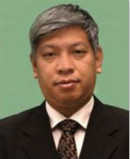
Yong Hu
Tenured Associate professor
The University of Hong Kong, China
Title: Computational Intelligence for clinical diagnosis of spinal disorders
Abstract: In recent year, the incidence of spinal disorders is rising sharply with the aging trend of Hong Kong Society. Medical image is an important diagnosis for clinicians and surgeons to select the most appropriate treatment. However, the complex nature of the spine and spinal cord make the image reading with difficulty. Development of artificial intelligence can help to assistant diagnosis of various spinal disorders. In recent years, we have applied AI in various spinal disorders as following applications: 1) Automatic analysis of cervical spinal cord DTI for diagnosis of cervical myelopathy, 2) Automatic tracking of the lumbar spine using digitalized video fluoroscopic imaging for identification of lumbar instability and 3) Multi-parameter Classification for progress prediction of scoliosis.

Sarah Harris
Associate Professor
University of Nevada, Las Vegas
Title: Control algorithms for smooth prosthetic gait
Abstract: An estimated 23.6 million Americans are affected by Type II diabetes and 37,000 undergo lower limb amputation each year [CDC]. About half of these patients are prescribed a foot-ankle prosthesis, yet mobility is often severely restricted by pain and impaired walking dynamics — in turn, leading to cardiovascular disease and other comorbidities. In order to affect better health outcomes for persons with amputation, we have addressed the link between residual limb pathology and mechanical dysfunction of the prosthesis with what we call a Dynamic Intelligence System. This system allows the dynamics of a human wearer of prosthetics to enter the control loop of that prosthetic limb for the first time. This Dynamic Intelligence System mitigates the extreme environment at the prosthesis-residual limb interface by reducing the harsh impacts and oscillatory loads that cause compressive, shear, and bending stresses at the residual limb.